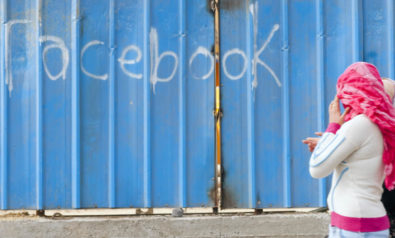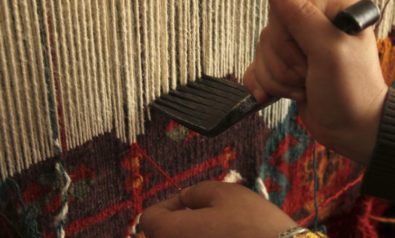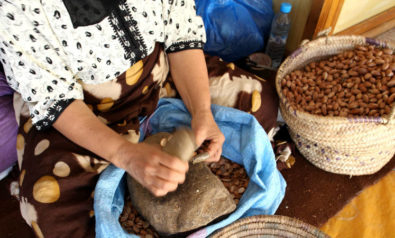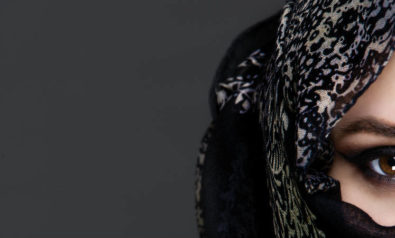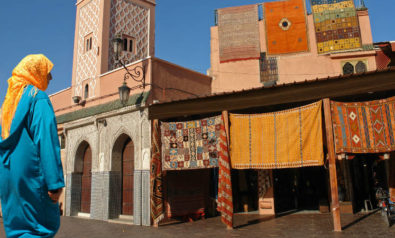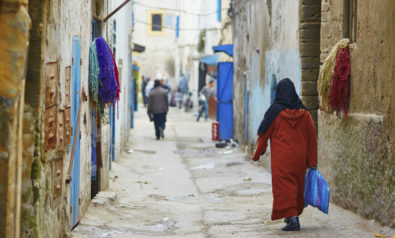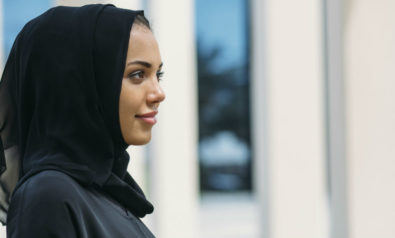Women have served as indispensable agents of change during and after the Arab Spring and have made significant gains but have a long road ahead.
It was not uncommon to see news of the Arab Spring accompanied by photos of women on the frontline. Women participated, organized and even led many of the uprisings throughout the region. In some countries, it was women who became the face of the revolution, including Tawakkol Karman in Yemen and Zainab al-Khawaja in Bahrain, to name a few.
Even for the average woman, squares where protests took place became liberating spaces with few social boundaries. Men, realizing the integral role that women would play in the revolutions, welcomed and accepted them into what traditionally was their space. The promise of freer and democratic societies would presumably facilitate greater women’s rights. As it would turn out, women had the most to gain—and lose—from the Arab Spring.
Aftermath of the Arab Spring
For many of the countries that saw an end to their despotic regimes, the immediate aftermath of the Arab Spring was positive for women. In Yemen, women played a tremendous role in the political transition after the ouster of Ali Abdullah Saleh from his presidential throne in 2012. The international community hailed the National Dialogue Conference (NDC), which lasted around a year from early 2013, for its inclusion of women. Women occupied 30% of seats at the conference, and headed three out of the nine committees within it. The other six committees? They served as deputy presidents.
Women organizations rallied together as the NDC convened its constitution drafting committee, and called for a 30% quota of seats in government to be allocated to women. Their tenacity, months of rigorous lobbying both to members of the committee and their own communities, were rewarded. Not only was a 30% quota of seats in the legislative, judicial and executive branches reserved for women, but the minimum age of marriage was also set to 18. (In some places in the United States, girls can still marry as young as 12.)
Women saw an increase in political representation even in countries whose political vacuum was filled by Islamist political parties. In Libya, the Justice and Development Party, affiliated with the Muslim Brotherhood, comprised the second largest number of women of all political parties represented in the General National Congress (GNC) before it was disbanded in 2014. Overall, women occupied 33 out of the 200 seats in the GNC. Similarly in Tunisia, by 2014 women had won 49 out of the 217 seats in the Constituent Assembly. Out of all of the women representatives, 42—a vast majority of them—are members of the Islamist Ennahda party.
Egypt, however, is another story. The premature elections held after the ouster of President Hosni Mubarak ushered in an Islamist government controlled by the Muslim Brotherhood that saw a reversal of women’s rights, rather than an advancement. Had the Morsi government remained in power before its overthrow in 2013, patriarchy would have been codified by the new constitution.
Not only were provisions guaranteeing equality between men and women left out from the old constitution, but the constitution no longer forbade discrimination on the basis of gender. For many, the new constitution marked the breaking point for their tolerance of the Morsi government, and it provided the green light for a military coup d’état led by the current president, Abdel Fattah al-Sisi.
In the latest Egyptian elections, women won 75 out of the 568 seats in the House of Representatives. Sisi appointed an additional 14 female representatives, which meant that Egyptian women now comprise almost 15% of seats—a record high for Egypt. In 2012, the first election after Mubarak’s fall, and the rise of the Muslim Brotherhood government, women made up only 2% of the total representatives, which was a drastic drop from 13% in 2010, before the Arab Spring.
There is relative progress in Egypt. However, women continue to be subject to sexual harassment in public and violence in private spaces, not least of which is domestic violence at home, and torture and rape in prison.
Hitting the Ceiling
Egypt may offer some hope for the status of women today, but the future in Yemen and Libya looks grim. The government has all but collapsed in Yemen after the Houthi takeover of the capital, Sanaa, the re-emergence of al-Qaeda and the rise of the Islamic State (IS) to fill the power vacuum, and the war between the Houthi rebels and the Saudi-led coalition that has left destruction, food, water and refugee crises, and an alarmingly high civilian death toll in its wake. Libya continues to suffer from a civil war between different tribal groups vying for control over its land that has rendered its political process all but obsolete, and fragmented at best.
While women continue to be active on the ground in Syria in documenting the crimes of the Assad regime and engaging in hands-on work on the ground as teachers, doctors and other civic positions, they are poorly represented among the opposition leadership. Indeed, the Syrian National Coalition (SNC) has persistently failed to bring any women to peace talks with foreign states. This begs the question of whether or not a political transition—be it after the fall of the Assad regime or the federation of Syria—will continue to be male-dominant, despite the integral role women have played in Syrian civil society.
However, for the states that have avoided collapse and continue to rebuild and pursue a democratic transition after their Arab Spring, what does the future of women look like?
 Fair Observer provides you deep and diverse insights for free. Remember that we still have to pay for servers, website maintenance and much more. So, donate now to keep us free, fair and independent.
Fair Observer provides you deep and diverse insights for free. Remember that we still have to pay for servers, website maintenance and much more. So, donate now to keep us free, fair and independent.
Historically, agency of women is egregiously reduced in a time of war. Even in stable countries like Tunisia and Egypt, women pursuing the advancement and codification of their political, social and economic rights are hindered by deeply conservative societies and dominant Islamist political parties. Unless these realities change, will women eventually hit a ceiling in their pursuit of equality?
Feminism in the Muslim World
Today, discourse on feminism in the Muslim-world has largely revolved around whether or not women’s rights are compatible with Islam. Can women achieve equal rights under an Islamic government? To what extent can they campaign for women’s rights in a conservative society?
Deniz Kandiyoti argues that there are only two trajectories feminist discourse can take: either deny that Islamic practices are oppressive, or claim that oppressive practices are not Islamic.
Both trajectories fail to address the limitations and shortcomings of feminism that operates within an Islamic framework. For one, any form of Islamic governance or jurisprudence is incompatible with pluralism, because the imposition of any religion will inherently restrict individual choice. It is difficult to deny that women’s rights are best progressed in environments that promote pluralism, such as a secular democracy.
However, publicly criticizing Islam or promoting secularism could be more problematic than beneficial for women’s-rights activists. For one, it could delegitimize these campaigns, especially if they are operating in conservative societies. Government authorities themselves could accuse them of being funded by the West, and outright ban them. Inversely, these new governments also realize they cannot belittle women’s-rights movements, especially after the role they played in the Arab Spring.
Islam can not only define the work of some women in the Middle East and North Africa (MENA), but can also help enable them to become agents of change in their communities. This is especially helpful for women in conservative societies that require time to open up and undergo an organic process so that rights codified in law also become norms on the ground.
Iranian women are also changing society by dominating professions that most strongly influence civil society and culture overall—publishing and the arts. Through cinema, literature and the press, these women are slowly prying society open and exposing it to new ideas.
In Egypt, for example, the hijab (headscarf) can provide women with agency to navigate male-dominated public spaces. As Leila Ahmed writes in her book, The Quiet Revolution, the hijab gives religious authority to women who feel confined to their home. In instances like this, the hijab can be liberating.
However, in countries where it is mandatory for women to wear the hijab, it can be oppressive. The pursuit of women’s rights in Iran, which includes re-imagining the hijab as an accessory rather than part of the Islamic dress code, serves as an interesting case study of how women can be agents of change in the Muslim world.
Lipstick Jihad
Although not a part of the Arab Spring or the Arab world, the movement inside Iran to advance women’s rights is multifaceted and can potentially serve as a model to emulate for women in MENA. In Iran, women are at the frontline and behind-the-scenes in the struggle for women’s rights. During the 2009 Green Movement, women adorned green veils and marched beside men to protest the speculated fraudulent election results that brought President Mahmoud Ahmadinejad to power. It was Neda Agha-Soltan, a young philosophy student, who became the symbol of the movement after she was shot dead during a protest—her death caught on camera and seen around the world.
Iranian women continue to play a pivotal role in the reform movement, which advocates for the expansion of women’s rights in addition to a variety of other political and social rights. In the 2016 parliamentary elections, women made sweeping gains where they now hold a record number of seats. Their greater political representation will provide a louder voice for women in Iran, and encourage political parties to appeal to the demands of women now that they have proved that they are a crucial voting bloc.
However, it is not only on the frontline, like in the Green Movement, or in government that women are serving as agents of change. It is also—and arguably most effectively—through everyday acts of resistance. Women will wear their mandated hijab far back on their head, allowing their hair to escape in the front, bold make-up and body-hugging overcoats. Journalist Azadeh Moaveni describes this act of resistance, even if it is carried out passively by some, as “lipstick jihad.” Iranian women push the boundaries of the Islamic dress code by re-imagining it into a unique fashion that has influenced the style of Muslim women around the world.
Iranian women are also changing society by dominating professions that most strongly influence civil society and culture overall—publishing and the arts. Through cinema, literature and the press, these women are slowly prying society open and exposing it to new ideas. If society can begin to open, which it has been, and undergo gradual cultural reformation, then this will usher pressure for the government to eventually follow suit.
Progress in Iran is slow. However, its diverse and creative approaches to advocate for women’s rights could serve as a model worth emulating for conservative societies and states governed, or influenced, by Islamic law. Lipstick jihad is unique to Iran, and irrelevant for women in countries where the hijab is not imposed. But what can be learned from Iran is that these individual acts of resistance that occur parallel to more organized efforts by women’s rights organizations and reformist political parties that help penetrate every echelon of Iranian society.
What the Future Holds
While Iran experiences slow cultural reformation that quietly resists the Islamic Republic, women in countries that are actually beginning the slow process of democratization have a tremendous opportunity to shape the future of the state—one that is more inclusive of women in its political process and a guarantor of their rights—while simultaneously leading grassroots efforts to carve more public spaces for women in civil society.
The future for Arab states like Syria, Yemen and Libya paints a grimmer picture. Women historically bear the brunt of war and conflict. Rape is commonly used as a weapon of war against women to terrorize societies. Women also typically make up the largest number of civilian casualties. In Libya and Yemen, the hope is that an eventual transition process will incorporate women like it did in the immediate aftermath of the Arab Spring, and that Syria will follow suit. If not, women will continue to challenge patriarchy as they always have in these countries by other means.
There is a long road ahead for the region as a whole to achieve full social, political and economic rights of women. Women will still need to challenge patriarchy, whether it be by electing more female candidates to political office, utilizing the arts and press—cultural conduits to spread their message and transform society—or taking to the streets to protest and demand change. Or, perhaps, all of the above.
The views expressed in this article are the author’s own and do not necessarily reflect Fair Observer’s editorial policy.
Photo Credit: Joel Carillet
Support Fair Observer
We rely on your support for our independence, diversity and quality.
For more than 10 years, Fair Observer has been free, fair and independent. No billionaire owns us, no advertisers control us. We are a reader-supported nonprofit. Unlike many other publications, we keep our content free for readers regardless of where they live or whether they can afford to pay. We have no paywalls and no ads.
In the post-truth era of fake news, echo chambers and filter bubbles, we publish a plurality of perspectives from around the world. Anyone can publish with us, but everyone goes through a rigorous editorial process. So, you get fact-checked, well-reasoned content instead of noise.
We publish 2,500+ voices from 90+ countries. We also conduct education and training programs
on subjects ranging from digital media and journalism to writing and critical thinking. This
doesn’t come cheap. Servers, editors, trainers and web developers cost
money.
Please consider supporting us on a regular basis as a recurring donor or a
sustaining member.
Will you support FO’s journalism?
We rely on your support for our independence, diversity and quality.



